Feynman Path Integrals in Quantum Mechanics
Feynman Path Integrals in Quantum Mechanics
Feynman Path Integrals in Quantum Mechanics
- No tags were found...
Create successful ePaper yourself
Turn your PDF publications into a flip-book with our unique Google optimized e-Paper software.
1 IntroductionThe standard formulations of <strong>Quantum</strong> <strong>Mechanics</strong> were developed by Schröd<strong>in</strong>ger, Heisenbergand others <strong>in</strong> the 1920s. Already 1933 Dirac published a paper where he suggestsexp(iS/¯h) to correspond to the propagator, where S is the classical action. <strong>Feynman</strong>developed this idea, concern<strong>in</strong>g other paths than only the classical one and publisheda third complete formulation of <strong>Quantum</strong> <strong>Mechanics</strong> <strong>in</strong> 1948 ([1]). As we will see, thisformulation provides a much more <strong>in</strong>tuitive <strong>in</strong>troduction to the quantum theory. First ofall we will have to state the fundamental concepts of <strong>Quantum</strong> <strong>Mechanics</strong>. S<strong>in</strong>ce they arewell known to the reader I will do that very shortly but <strong>in</strong> a way which is useful for thedevelopment of the theory <strong>in</strong> later sections.2 The <strong>Path</strong> Integral Formulation of <strong>Quantum</strong> <strong>Mechanics</strong>The goal of this section is to <strong>in</strong>troduce <strong>Quantum</strong> <strong>Mechanics</strong> <strong>in</strong> a completely different wayfrom how it is usually done <strong>in</strong> textbooks.2.1 Probability and Probability AmplitudeLet’s start with the famous imag<strong>in</strong>ary double-slit experiment: We have an electron source<strong>in</strong> some po<strong>in</strong>t A, a screen B with two holes through which the electrons might pass, anda detector plane C. We def<strong>in</strong>e P 1 (x) as the probability that, if we close hole number2, an electron is detected at the position x <strong>in</strong> C. Analogously for P 2 (x). It is a wellknown experimental fact that P (x), the probability to arrive at x with both holes open,is not equal to (P 1 (x) + P 2 (x)) as long as we do not detect which hole the electron hasgone through. We can state a correct law for P (x) mathematically as follows: there arecomplex numbers Φ 1 and Φ 2 such thatP = |Φ| 2 , where Φ = Φ 1 + Φ 2 , P 1 = |Φ 1 | 2 , P 2 = |Φ 2 | 2 (1)We call Φ(x) the probability amplitude for arrival at x.2.2 Probability Amplitude for a <strong>Path</strong>Instead of only hav<strong>in</strong>g one screen and two holes as <strong>in</strong> 2.1, we can th<strong>in</strong>k about <strong>in</strong>sert<strong>in</strong>gmore screens and hav<strong>in</strong>g several holes <strong>in</strong> each screen. The number of possible paths (eachof which will have some ”partial” amplitude Φ i (x)) from A to some po<strong>in</strong>t x on C <strong>in</strong>creases.The total amplitude Φ(x) for an electron start<strong>in</strong>g <strong>in</strong> A to reach this po<strong>in</strong>t x on C <strong>in</strong> acerta<strong>in</strong> time T will be the sum of all partial amplitudes Φ i (x). To formulate this moreformally, we shall limit ourselves to a one-dimensional problem. The generalization toseveral dimensions is obvious.We def<strong>in</strong>e P (b, a) as the probability to go from a po<strong>in</strong>t x a at the time t a to the po<strong>in</strong>t x b att b . We now know that we can write the probability P (b, a) = |K(b, a)| 2 of an amplitudeK(b, a) to go from a to b. This amplitude is the sum of all the partial amplitudes 1 , onefor each possible path from (x a , t a ) to (x b , t b ). We now write the partial amplitudes asΦ[x(t)].∑K(b, a) =Φ[x(t)] (2)all paths from a to bThe question is how each path x(t) contributes to the total amplitude. It is so to speakthe central po<strong>in</strong>t <strong>in</strong> the <strong>Path</strong> Integral theory of <strong>Quantum</strong> <strong>Mechanics</strong> that <strong>Feynman</strong> postulates2 : The paths contribute equally <strong>in</strong> magnitude, but the phase of their contribution1 This corresponds to <strong>Feynman</strong>s postulate I <strong>in</strong> [1].2 Postulate II <strong>in</strong> [1]2


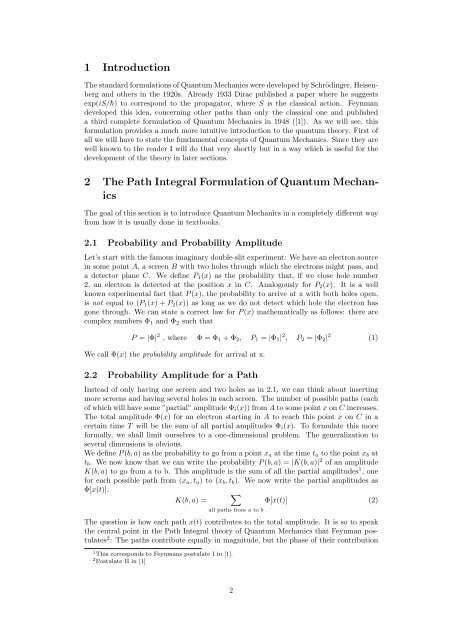
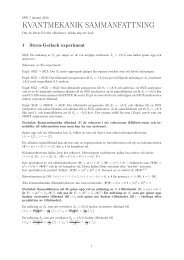

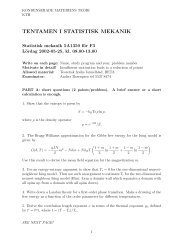
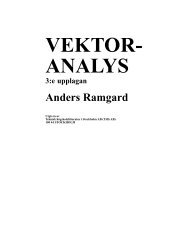
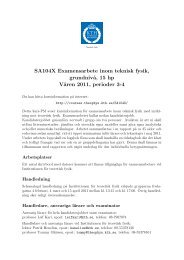

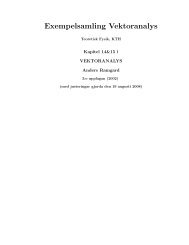

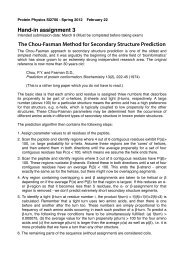

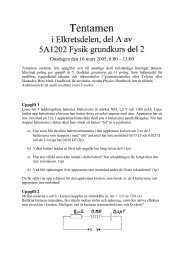
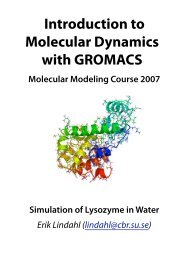
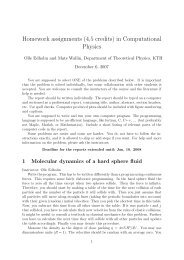
![[VAR]=Notes on variational calculus](https://img.yumpu.com/35639168/1/190x245/varnotes-on-variational-calculus.jpg?quality=85)